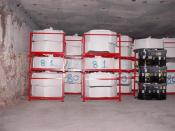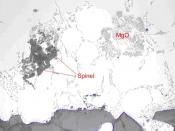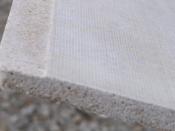Finding The Empirical Formula of Magnesium Oxide
Aim: The aim of this experiment is to burn a known mass of magnesium in air and find the mass of the magnesium oxide produced. Using my results I can then calculate the empirical formula of magnesium oxide.
Results:
Observations
Before starting I notice that the magnesium is very shiny and flexible.
After one minute of heating the Magnesium appears to be going white.
The Magnesium has caught fire and is glowing orange.
The fire has calmed down and a crumbly white substance is being formed.
Fire has all gone and now I am left with the crumbly white oxygenated iron.
Mass of crucible + lid = 34.00 g
Mass of crucible + lid + magnesium before heating = 34.10 g
Mass of crucible + lid + magnesium oxide after heating = 34.20 g
Magnesium
To find the weight of the magnesium on its own we have to take away the weight of the crucible and lid.
Mass of crucible + lid + magnesium before heating = 34.10 g
Mass of crucible + lid = 34.00 g
Therefore, the mass of the magnesium = 0.10 g
Oxygen
We need to do the same to find out the mass of the oxygen o the magnesium.
Mass of crucible + lid + magnesium oxide after heating = 34.20 g
Mass of crucible + lid + magnesium before heating = 34.10 g
Therefore, the mass of the oxygen = 0.10g
We will now need to change the masses into moles:
Magnesium
0.10 / 10 = 0.01 mole
Oxygen
0.10 / 10 = 0.01 mole
Ratio of moles in each element
Mg : O
0.01 : 0.01
1 : 1
Therefore the empirical formula for Magnesium Oxide is MgO
Conclusion: I thought my experiment went very well.



Wrong Title & Category
Sorry about this guys. My essay should be titled:
Finding The Empirical Formula of Magnesium Oxide
and under the category 'Chemistry'
0 out of 0 people found this comment useful.